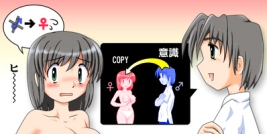| Display title | Opposite Gender Clone |
| Default sort key | Opposite Gender Clone |
| Page length (in bytes) | 28,522 |
| Namespace ID | 0 |
| Page ID | 62434 |
| Page content language | en - English |
| Page content model | wikitext |
| Indexing by robots | Allowed |
| Number of redirects to this page | 1 |
| Counted as a content page | Yes |
| Number of subpages of this page | 3 (0 redirects; 3 non-redirects) |
| Page image |  |
| Edit | Allow all users (infinite) |
| Move | Allow all users (infinite) |
| Delete | Allow all users (infinite) |
| Page creator | prefix>Import Bot |
| Date of page creation | 21:27, 1 November 2013 |
| Latest editor | HeneryVII (talk | contribs) |
| Date of latest edit | 15:24, 27 December 2022 |
| Total number of edits | 22 |
| Recent number of edits (within past 180 days) | 0 |
| Recent number of distinct authors | 0 |
| Transcluded templates (7) | Templates used on this page:
|
Description | Content |
Article description: (description)
This attribute controls the content of the description and og:description elements. | While clones and most other sorts of sci-fi duplicates are identical to the original character and, by definition, the same sex, exceptions do exist. The idea dates at least from Time Enough for Love by Robert Heinlein, where the opposite sex clones become sexual partners of the original; nowadays the trope is more used as a quick way of producing a Distaff Counterpart rather than for titillation. Merely being of the opposite sex of his or her original greatly increases the chance of the clone surviving the denouement and showing up in a future story. This way writers can invoke the First Law of Gender Bending without sacrificing an originally sex character they've grown fond of. |
